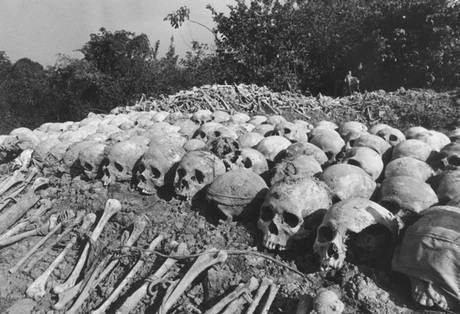By the end of 1977, Vietnam signed a treaty of cooperation with Laos. Clashes between the Khmer Rouge and Vietnamese forces over ownership of some islands in the Gulf of Thailand and along the border took place as early as 1975. But the Khmer Rouge believed that China would support their cause, began large-scale attacks in mid-1977 into the border of Vietnamese provinces with the intention of gaining back Cambodian territories lost to the Vietnamese a few centuries ago.
The Khmer Rouge leaders suspected that the Eastern Zone cadres were on the Vietnamese side. They were accused of having Khmer bodies with Vietnamese heads (Kbal yuon kloun khmer). Pol Pot ordered the Eastern Zone cadres to S-21. The leader of the Zone, So Phim, committed suicide in 1978 after he received an invitation to Phnom Penh from Pol Pot. Other Khmer Rouge cadres fled to Vietnam and later joined the Vietnamese army in overthrowing the Khmer Rouge.
In December 1978, Vietnamese troops fought their way into Cambodia. On January 7 1979, the Vietnamese troops and the Kampuchean United Front for National Salvation, comprising former Khmer Rouge cadres and Cambodian communists exiled in Vietnam captured Phnom Penh. In the mean time, the executioners of S-21 managed to take lives of fourteen more Cambodian prisoners on the morning of January 7th.
Even the Khmer Rouge was out of power, they still remained a threat to Cambodia for several more years. Only with signing of the Paris Peace Agreement in October 1991, following the Vietnamese withdrawal from Cambodia, the county was slowly return to peace. Contrary to the agreements, the Khmer Rouge refused to disarm, because they believed there were still disguised Vietnamese troops inside Cambodia. Eventually, Pol Pot was arrested by his own commander in chief, Ta Mok. Pol Pot died under house arrest in 1998. Ta Mok was captured the following year and died in 2006. The khmer Rouge resistance movements effectively ended.
